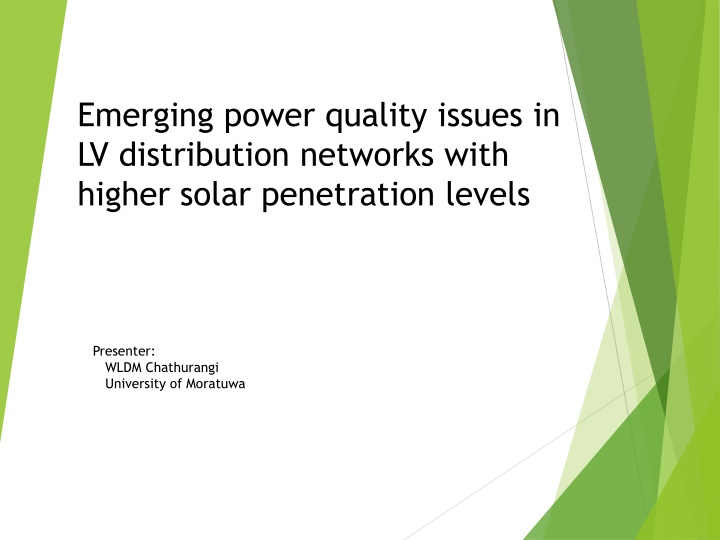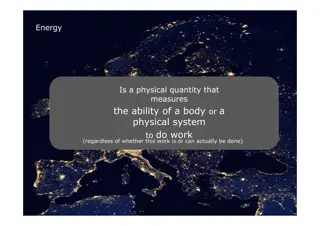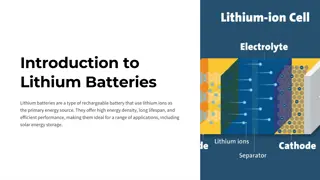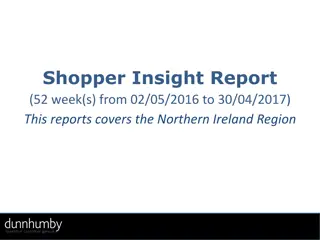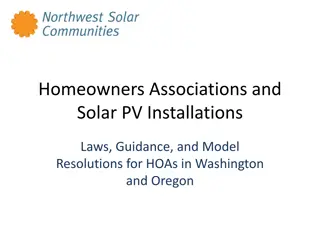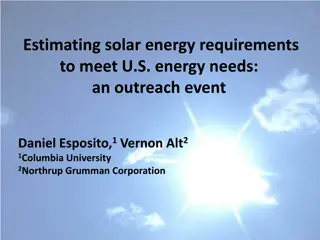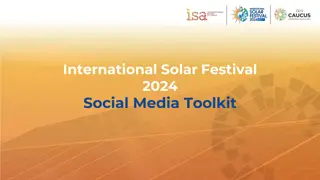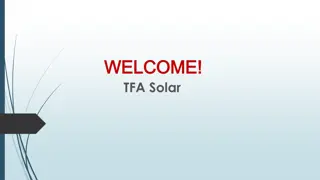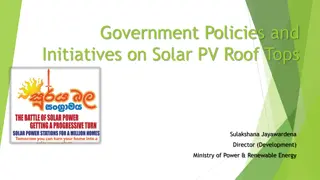Power Quality Challenges in LV Distribution Networks with High Solar Penetration
Distribution networks are facing new challenges due to increased solar penetration. This presentation explores emerging power quality issues and their impacts on LV systems. Insights from the University of Moratuwa shed light on solutions and implications for network reliability and performance.
Download Presentation

Please find below an Image/Link to download the presentation.
The content on the website is provided AS IS for your information and personal use only. It may not be sold, licensed, or shared on other websites without obtaining consent from the author.If you encounter any issues during the download, it is possible that the publisher has removed the file from their server.
You are allowed to download the files provided on this website for personal or commercial use, subject to the condition that they are used lawfully. All files are the property of their respective owners.
The content on the website is provided AS IS for your information and personal use only. It may not be sold, licensed, or shared on other websites without obtaining consent from the author.
E N D
Presentation Transcript
Emerging power quality issues in LV distribution networks with higher solar penetration levels Presenter: WLDM Chathurangi University of Moratuwa
Local solar PVs experience and government initiatives Battle for Solar - net-metering, net-accounting and net-plus Total install rooftop solar capacity -74 MWp (up to August 2017) 64 MWp capacity added during the past one year Battle for Solar Energy targets to achieve 200 MWp by 2020 and 1,000 MWp by 2025 2
Limitations for Solar Installations Technical issues Power quality issues Protection issues Stability issues Power quality violations arise from distribution level due to high penetration of rooftop solar systems Set a limit for solar PV interconnections into the grid (Hosting Capacity) 3
Case Study LECO LV distribution network in Kotte area One of the maximum solar PV connected transformer in Sri Lanka AZ0228 -250 kVA 11 kV/400 V transformer Present solar penetration level 40% (based on the transformer capacity) Number of solar customers - 24 cumulative solar capacity 102 kWp 4
Case Study Simulation Steady state voltage analysis DIgSILENT PowerFactory Simulation Platform Incorporation of field data in to simulation models and validations Details of distribution scheme, Transformer rating 250 kVA-11 kV/400 V Number of customers served 336 Number of customers with rooftop solar PV generations 24 Number of outgoing LV feeders from the transformer 3 5
Simulated network Single line diagram, Cont . 5 6 Project: Graphic: Grid Date: 6/14/2017 Annex: PowerFactory 15.0.0
Field Measurements Import and export energy 7
Results Transformer active power flow 8
Cont Feeder voltage rise (a) (b) (a) - Feeder 1 (b) Feeder 2 (c) Feeder 3 9 (c)
Cont Network energy loss 10
Hosting Capacity Hosting capacity Maximum capacity of solar PV that can be connected to a certain network/feeder without resulting in unacceptable quality and energy security Key factors that determine hosting capacity Size of PV Location of PV Fault levels Single phase/three phase connections Key requirements to determine hosting capacity Accurate feeder models PV characteristics Network measurements 11 Stochastic assessment
Limitations for hosting capacity All power quality phenomenon should be take into the account One value does not fit for all distribution networks 12
Thank you 13
